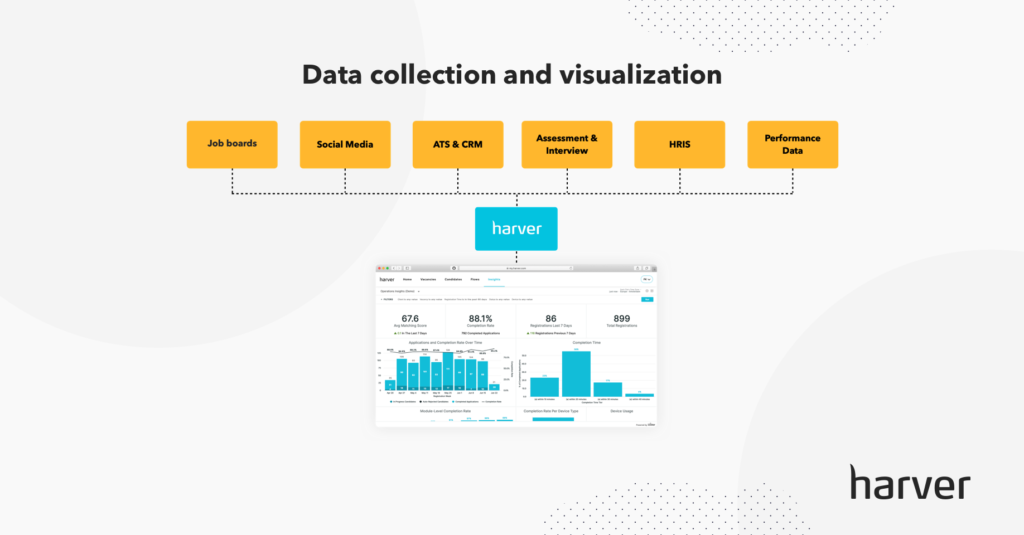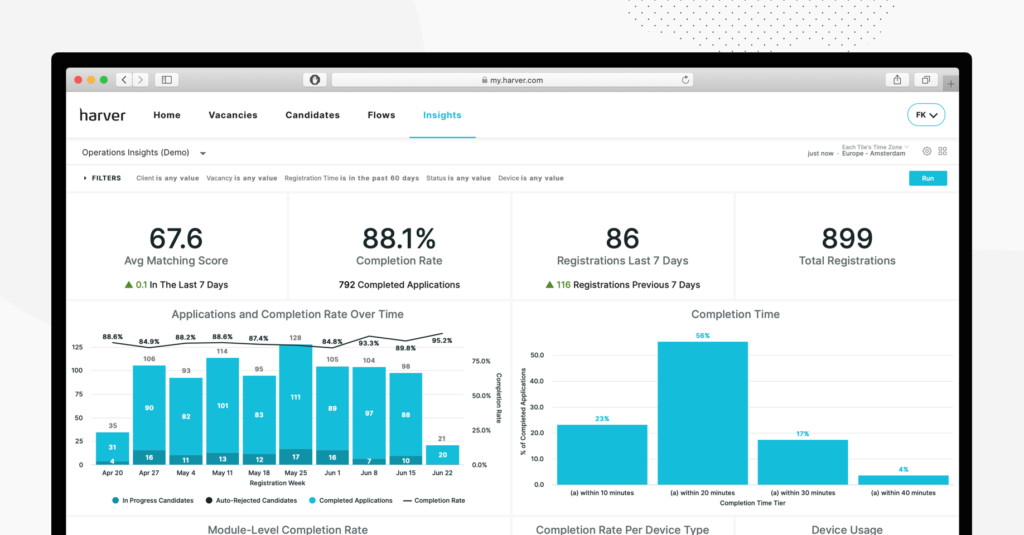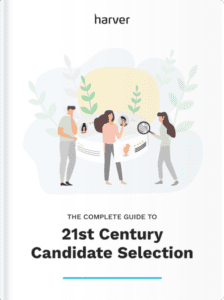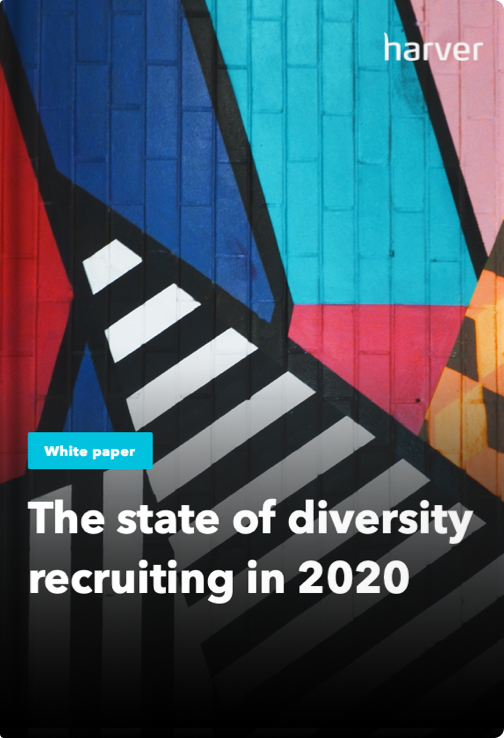In 2020, it’s hard to remember a world without analytics. These days, it seems like nearly everything is powered by data—especially when it comes to business. The world of recruitment is no exception, and talent data is almost certainly here to stay.
84% of recruiting professionals believe analyzing data to drive decisions will become even more commonplace over the next five years. That’s why it’s not exactly surprising that an increasing number of recruiters are already turning to recruitment analytics to put the right people in the right roles, and to do it in the smartest way possible.
Recruitment analytics is the route to introducing data-driven hiring at your organization, and by embracing data-driven hiring, you can make your recruitment process more effective and more efficient. So let’s dive in and see what the best practices are to make sure you get it right.
What’s in?
What exactly is recruitment analytics?
Recruitment analytics is a part of talent analytics that involves tracking, measuring, collating and analyzing candidate, and employee data to make better hiring decisions.
Many of today’s recruiters utilize analytics to produce actionable insights that enable them to make data-driven choices around candidate sourcing and selection. In fact, 78% of large companies rate people analytics as both urgent and important for their business.

Talent acquisition teams with mature analytics are
2x
more likely to improve their recruiting efforts.
Source: Linkedin
Many are also using predictive analytics for hiring, which is the use of historical data to make predictions about the likelihood of future outcomes. Predictive analytics empower organizations—and the recruiters that staff them—to make smart hiring decisions about the future that are backed by data.
Like what you see?
Don’t miss out. Subscribe to our quarterly digest to get the latest TA and TM resources delivered right to your inbox.
How can recruitment analytics improve your hiring process?
Nearly all forward-thinking organizations embrace recruitment analytics to make data-driven hiring decisions. Why do the vast majority rely on recruiting data? The benefits speak for themselves! Recruitment analytics can significantly improve your hiring efforts by:
Making the process more efficient
Recruiting analytics can help you identify a myriad of opportunities to improve your hiring process. By analyzing candidate and employee data, you can effectively pinpoint hiring bottlenecks to make the recruitment process more efficient across the board. Doing so will not only streamline workflows and allow you to work more efficiently, but also decrease hiring costs and give you more room in your recruiting budget to try new things.
Improving your quality of hire
By using analytics to make data-driven hiring decisions, you can identify the top candidates, analyze what your best hires have in common, and repeat the process as necessary. Doing so will help you better match candidates to open roles you’re hiring for, improve your overall quality of hire, and reduce turnover.
Optimizing recruiting costs
The use of candidate and employee data allows recruiters like you to reduce spending on channels that don’t bring in high-quality candidates. It’s not necessarily about hiring cheaper but hiring smarter. Optimizing your recruiting costs will help make your hiring process smoother, stronger, and more cost-efficient.
Tracking performance
Recruitment analytics can help shed light on how you’re tracking against your recruitment key performance indicators (KPIs). By gaining insights into the performance of your recruiting team, you can make improvements and optimize workflows for efficiency. You can also measure your performance over time and compare them to industry benchmarks to see where you stand.
Improving diversity
Diversity recruiting proves challenging for many organizations; however, with the right data, you can track your diversity initiatives over time and make changes where you need to. For example, recruitment analytics will break down demographics like gender or veteran status during each stage of your hiring funnel.
The state of diversity recruiting in 2020
Making future forecasts
Part of being a recruiter is planning ahead and anticipating talent and skills gaps in advance. Predictive analytics are especially useful for preparing for the future and making realistic estimates in terms of your anticipated recruiting budget, time to hire, cost per hire, hiring frequency, and other important details.

77%
of talent professionals say their companies currently use people analytics for strategic workforce planning or plan to do so within the next 5 years.
Source: Linkedin
Recruitment analytics best practices
1. Choose the right metrics to track
If you’re working on embracing recruitment analytics to make data-driven hiring decisions, you’re already on the right track—but not just any metrics will do. It’s important that you choose the right metrics to track based on your company’s unique objectives and goals.

71%
of recruiting professionals see analytics as a high priority for recruiting success.
Source: Jibe & Beamery study
Surveys show that time to hire, cost per hire, and retention rate are the most-tracked recruiting metrics today. With that said, these are just a few key areas to pay attention to. There are several other recruiting metrics that can also be very useful for pinpointing opportunities to improve.
For example, source of hire, application completion rate, candidate quality, quality of hire, and applicant-to-hire can all drive powerful insights, depending on the areas where you’d like to see the most improvement in your hiring process.
For example, if you want to optimize your application process, it is useful to track the application completion rate, and to identify the touchpoints with the highest drop-off rates. If you see that the rate is low, meaning that a lot of people who start the application don’t finish it, it indicates that there might be a problem with your application process. Is it too lengthy or do some elements take too long to load?
After you optimize the process, you can continue tracking the application completion rate and see if there is any improvement.
2. Collect relevant data
Renowned statistician Edward Tufte said it best: “If the statistics are boring, you’ve got the wrong numbers.”
Part of using recruitment analytics to inform your hiring process involves knowing which data to collect and how to apply it. For example, if you want to analyze candidate quality per source to determine where your best candidates are coming from, you need to collect information on the different sources, as well as data on candidate quality.

And it’s not only about collecting the right data but also making sure you have enough of it to work with. It’s essential to gather data from an adequate amount of time to identify real trends and avoid making decisions based on short-term outliers.
If you’d like to see how Haver can transform your hiring process,
book a demo here!
3. Visualize your data
There is so much recruiting data available that it can actually be overwhelming. So how can you collate and visualize your data to make better sense of it and see what’s working (and not working) in your hiring process?
Enter recruiting dashboards. By building a great recruiting dashboard, you can track the metrics most valuable to your organization and get actionable insights in a fast way. Recruiting dashboards lay out all of your data visually, making it much easier to identify trends and see low-hanging fruit opportunities for improvement.
Here’s for example the Operations insights dashboard available in the Harver platform, which allows recruiters to measure the most important recruitment metrics. This is available out of the box, but you can also customize it with your own data, if you prefer to track more or different metrics.

Note: If you’re using the Harver platform, you have access to a series of dashboards that are built-in, such as Operations insights, Matching insights, Sourcing and Candidate experience insights, Bias insights and so on. We’ve explored these dashboards in the article below.
4. Put the data into perspective
Data itself doesn’t tell you anything. As data visualization specialist Stephen Few so thoughtfully explained, “Numbers have an important story to tell. They rely on you to give them a clear and convincing voice.”
To really make smart use of recruitment analytics, you need to put it into perspective. One way to do this is to track your improvements over time. Tracking your progress month over month (MoM) and year over year (YoY) will help you see where you stand against your goals and then compare to industry benchmarks.
By evaluating and tracking against progress over time, you can truly drive meaningful changes that enhance your hiring process, both now and down the road. Change doesn’t happen overnight. Just think of it as a marathon, not a sprint!
Stop guessing,
Start data-driven hiring.
Learn how you implement a modern candidate selection process, that is: streamlined, experience-driven and backed by data.

5. Optimize your hiring process with data insights
Once you know where you stand, you can start improving your recruiting process. The whole point of collecting candidate and employee data is to identify actionable insights and make changes to optimize your hiring efforts. How can you act on the data you collect and analyze to drive real, meaningful change?
Here’s an example: If your candidate quality is low, it might mean that your job postings need rewriting and you have to be clearer about your requirements. You might also consider reviewing where you advertise your openings.
Or, say your new hire turnover rate is really high. This might indicate the need for a stronger, more effective onboarding process and better quality of hire to ensure candidates are well matched to roles. Making these changes will not only create a more optimal hiring process for you internally but also improve the candidate experience by removing roadblocks.
6. Use the data to plan for the future
Predictive analytics makes it possible for recruiters to plan well into the future based on the likelihood of certain events. Using predictive analytics, you can determine how much time you will need to hire someone for a certain role, how much money you need to do that, where the talent gaps are currently, which candidate sources generate the best results, and more.
While we certainly can’t anticipate everything—and the COVID-19 pandemic is the perfect example of why—predictive analytics can help us think ahead and prepare for what’s (likely) to come in the future.

Only
1 in 5
HR leaders believe their organizations are effective at using talent data to inform business decisions.
Source: Gartner
7. Recognize data limitations
Data alone won’t tell you everything you need to know or solve your problems. There’s a big difference between simply looking at metrics and taking a deep dive into recruitment analytics to find valuable insights. Be prepared to dig deeper to make the most of the candidate and employee data that you collect.
Ask yourself: Are there any changes in the labor market, like those we’re experiencing now as a result of the COVID-19 pandemic? How are external factors impacting the metrics you’re analyzing? Looking beyond the numbers to truly understand both internal and external factors influencing them can make a big difference in how useful the data is to your organization.
Also, simply gathering data won’t help you—it’s only the first step. In order to truly reap the rewards that come with data-driven hiring, you need to turn insights into action. In other words, be proactive about coming up with solutions to the problems you pinpoint in your hiring process. Your candidates and coworkers will thank you for it!
Next step
Recruitment analytics is an integral part of hiring in the 21st century. It can help you make better hiring decisions and ultimately, build a strong workforce for your organization—but only when you use it wisely.
It is crucial to know what metrics to track and why to understand what the data is telling you and to then act on that data to drive meaningful improvements. Doing so will allow you to continuously optimize your hiring process and make great hires, even under challenging, changing, and unforeseen circumstances.
If you’d like to see the Harver recruitment dashboards and learn more about the way data is collected, analyzed and used to improve specific recruitment metrics, you can book a demo below.
Ready to transform your hiring process?



